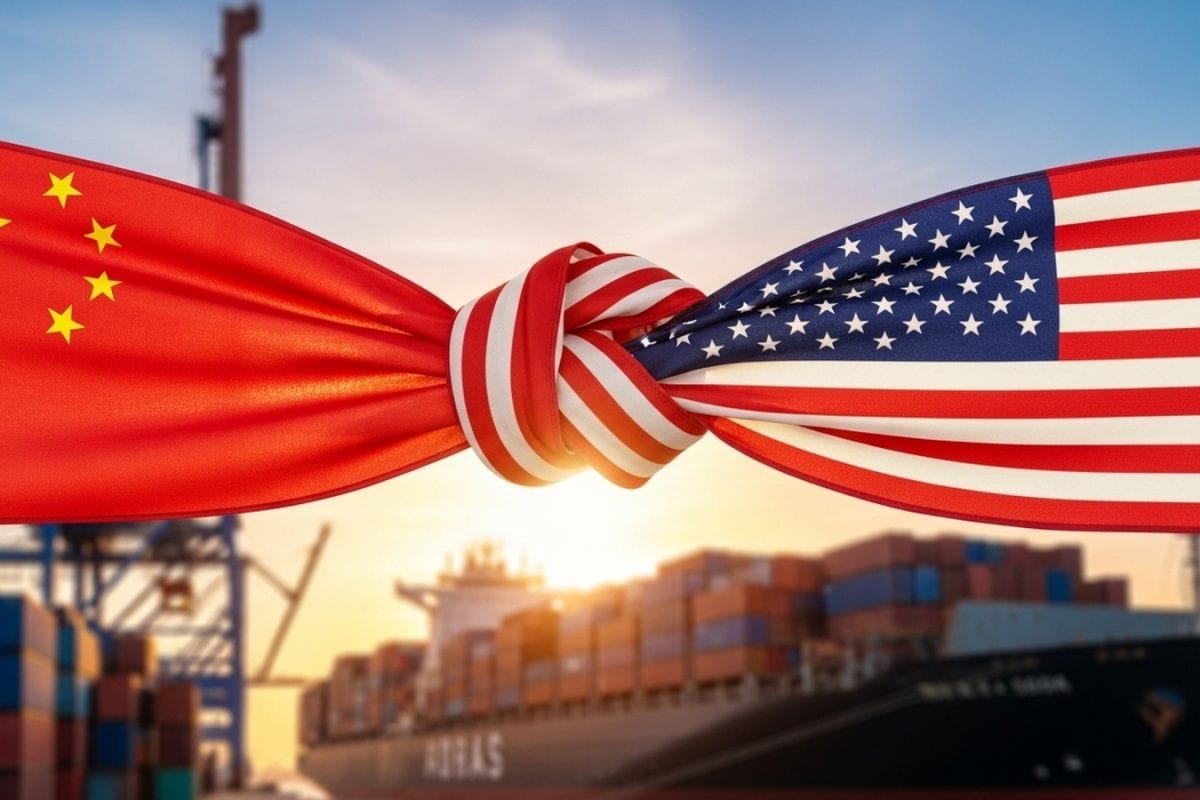

After what both sides are calling "constructive" talks in Stockholm, China and the United States have agreed to extend the pause on tariffs that has been in place since mid-May. The meetings, which took place over two days in the Swedish capital, aimed to de-escalate trade tensions between the world's two largest economies.
The current truce, which would have expired on August 12, will now be extended for another 90 days. This extension provides additional time for negotiators to work towards a more comprehensive and durable agreement. The meetings may not yield immediate large breakthroughs but the two sides could agree to another 90-day extension of a tariff truce struck in mid-May.
U.S. Treasury Secretary Scott Bessent and Chinese Vice Premier He Lifeng led their respective delegations in the talks held at Rosenbad, the Swedish prime minister's office. Swedish Prime Minister Ulf Kristersson also met with Bessent and U.S. Trade Representative Jamieson Greer before the talks resumed on Tuesday. While neither side released official statements after the first day of discussions, the atmosphere has been described as pragmatic.
The extension of the tariff pause provides a temporary reprieve from escalating trade hostilities that have rattled global markets. Without an agreement, global supply chains could face renewed turmoil from U.S. duties snapping back to triple-digit levels that would amount to a bilateral trade embargo. The US administration is racing to finalize trade deals ahead of an August 1 deadline to reimpose steep tariffs announced by the president back in April. Back in April, Trump stunned markets with a sweeping 145% tariff on Chinese imports, prompting an immediate response from President Xi Jinping, who slapped a 125% tariff on U.S. goods. A temporary 90-day truce followed, bringing tariffs back down to roughly 30% for Chinese goods entering the U.S. and 10% for U.S. exports to China.
The Stockholm talks follow Trump's biggest trade deal yet with the European Union on Sunday for a 15% tariff on most EU goods exports to the United States, and a deal with Japan. That agreement has brought a measure of relief to the EU but also frustration and anger, with France denouncing the deal as a "submission" and Germany, Europe's largest economy, also warning of "significant" damage. The United States has struck deals over tariffs with some of its key trading partners — including Britain, Japan and the European Union — since President Donald Trump announced “Liberation Day” tariffs against dozens of countries in April.
The pause also keeps open the possibility of a future meeting between President Trump and President Xi Jinping later in the year. Although U.S. Trade Representative Jamieson Greer suggested that an "enormous breakthrough" was not imminent, media reports have hinted at the chance of a 90-day extension to the trade truce -- possibly opening a path for a future meeting between Trump and Chinese counterpart Xi Jinping. Trump recently floated the idea of visiting China in the near future.
The negotiations between the U.S. and China involve a range of complex issues. Washington has complaints that China's state-led, export-driven model is flooding world markets with cheap goods, while Beijing says US national security export controls on tech goods seek to stunt Chinese growth. Talks are complicated by tech export curbs, human rights tensions, and China's rare earth leverage over US industries. Previous US-China trade talks in Geneva and London in May and June focused on bringing US and Chinese retaliatory tariffs down from triple-digit levels and restoring the flow of rare earth minerals halted by China and Nvidia's H20 AI chips and other goods halted by the United States.
Despite growing tensions in the Indo-Pacific — where U.S. military officials continue to prepare for a potential conflict with China — economic ties between Washington and Beijing appear to be thawing. In response, Beijing eased restrictions on rare-earth magnet exports, while Washington gave the green light for Chinese firms to purchase Nvidia's H20 semiconductor chip.